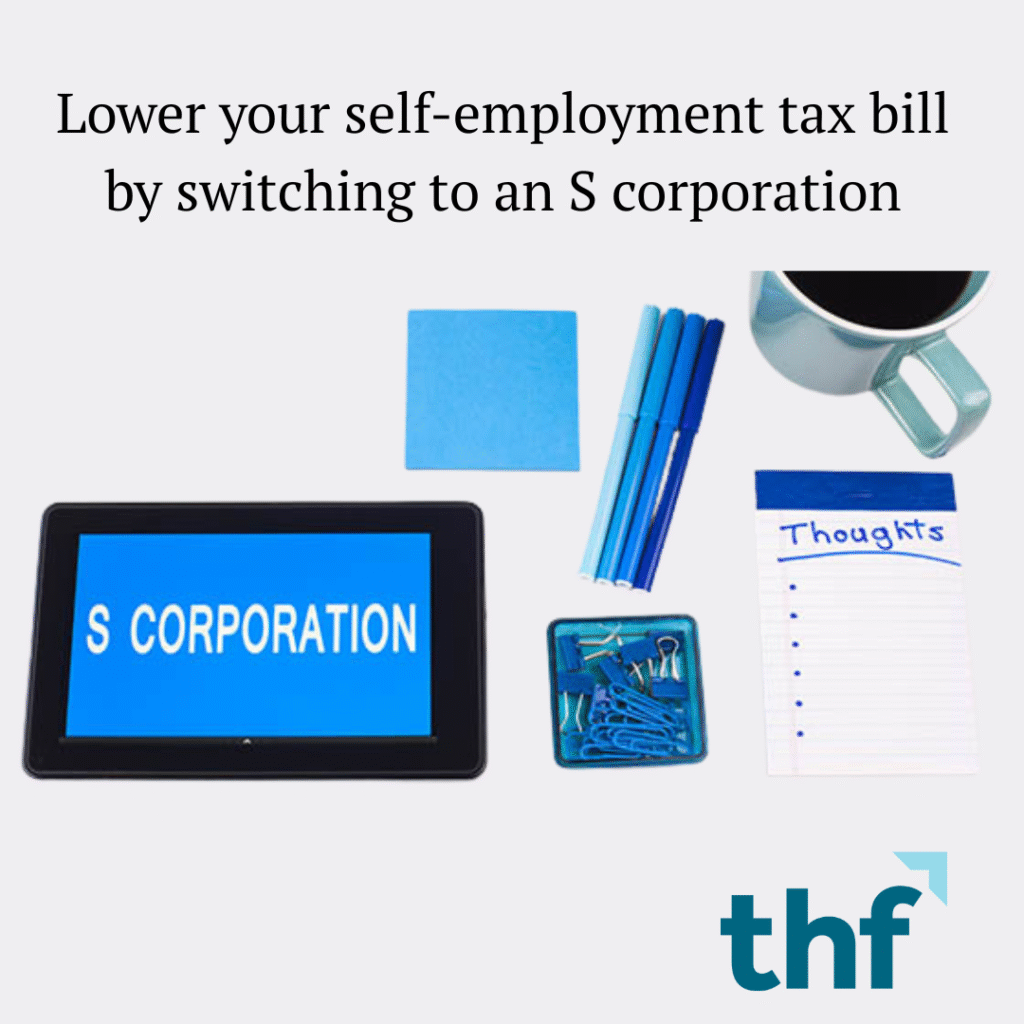
Self-Employed? Here’s How to Reduce Your 2025 Self-Employment Tax
If you’re self-employed and earning a strong income, you’ve likely asked: “Is there a way to reduce self-employment tax?” The good news? Yes—under the right conditions, converting to an S corporation (S corp) could lower your tax burden significantly.
At THF (Thomas Howell Ferguson CPAs), we help business owners and entrepreneurs explore legal tax strategies, including entity selection. Here’s how the self-employment tax and S corp relationship works—and whether it’s the right move for your 2025 tax plan.
Understanding the 2025 Self-Employment Tax
Before diving into S corps, let’s talk about how self-employment tax works in 2025:
- The self-employment (SE) tax rate is 15.3% on net earnings up to $176,100.
- 12.4% = Social Security
- 2.9% = Medicare
- 12.4% = Social Security
- Above that, only the Medicare portion applies—and it increases to 3.8% for high-income individuals (due to the 0.9% Additional Medicare Tax).
So if you’re a consultant, freelancer, contractor, or LLC owner, your full net income may be subject to this tax.
This leads many to ask: “How do I lower my self-employment tax?”
The answer often involves forming an S corporation.
S Corp and Self-Employment Tax – How It Works
With an S corporation, you split your income into two parts:
- Salary: Reasonable compensation that is subject to SE tax
- Distributions: Profits passed through to you not subject to SE tax
This structure offers one of the most effective ways for high earners to save. If you’re looking for how to reduce taxes for high income earners, the S corp route could help you:
- Save thousands in SE tax
- Increase your take-home income
- Retain profits inside the business for growth
What Are the Risks or Downsides?
While the S corp and self-employment tax benefits are attractive, this strategy isn’t right for everyone. Here’s what to consider:
- You must pay yourself a reasonable salary.
Underpaying can trigger IRS scrutiny and penalties. - Lower salaries may limit retirement plan contributions.
For example, a SEP IRA contribution is capped at 25% of salary.
Extra admin is required.
S corps must file a separate tax return, maintain corporate formalities, and keep accurate records.
How to Switch to an S Corporation in 2026
Here’s how to make the move if you want to optimize your taxes this year:
- From a sole prop or partnership:
Form a corporation under your state’s law and file Form 2553 with the IRS by March 15, 2026.
From an LLC:
You don’t need to re-incorporate. Simply elect S corp treatment using Form 2553, also by March 15.
Ready to Reduce Your Tax Burden? THF CPAs Can Help
If you’re looking for answers on how to avoid self employment tax or whether an S corp makes sense for your situation, we’re here to help.
The tax advisors at THF CPAs can guide you through entity selection, reasonable compensation analysis, payroll setup, and filing the right forms—on time and accurately.
📞 Contact us today or visit www.THF.cpa to schedule a personalized consultation. Let’s explore how to make your income work harder for you.


